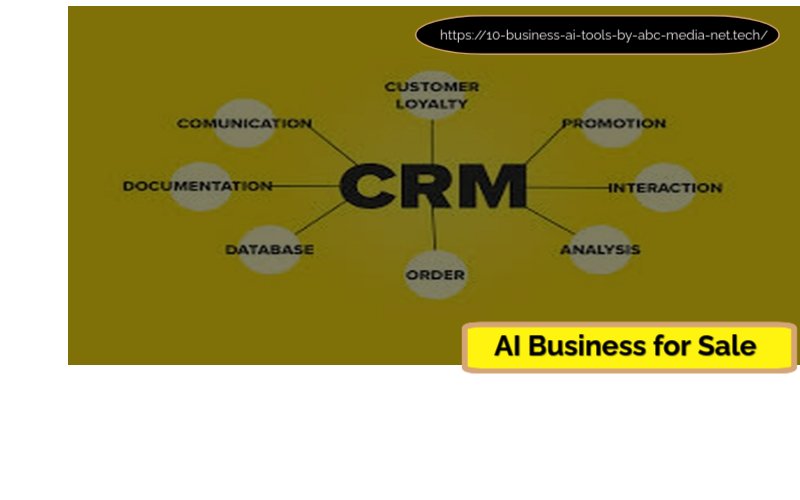In today’s fast-paced digital landscape, the intersection of business development and technology has become increasingly crucial for organizations aiming to thrive. As businesses strive to adapt to changing market dynamics, leveraging technology in their development strategies is no longer optional; it’s essential.
This comprehensive guide will explore the relationship between business development and technology, how they complement each other, and the best practices for integrating technology into your business development efforts.
Table of contents
- Understanding Business Development
- The Role of Technology in Business Development
- The Benefits of Integrating Technology into Business Development
- Best Practices for Combining Business Development and Technology
- Case Studies: Successful Integration of Technology in Business Development
- Challenges in Merging Business Development with Technology
- Future Trends in Business Development and Technology Integration
- Conclusion: Embracing the Future of Business Development Through Technology
- Frequently Asked Questions (FAQs)
- What is business development?
- How does technology impact business development?
- What are some examples of technologies used in business development?
- What challenges might arise when integrating technology into business development?
- What future trends should I watch regarding business development & technology?
Understanding Business Development
Business development encompasses a wide range of activities aimed at creating growth opportunities for an organization. This includes identifying new markets, building relationships with potential clients, enhancing product offerings, and exploring strategic partnerships. The ultimate goal of business development and technology is to increase revenue and expand the company’s reach.
Key Components of Business Development
- Market Research: Understanding market trends, customer needs, and competitive landscapes is vital for effective business development.
- Networking: Building relationships with industry peers, potential clients, and partners can open doors to new opportunities.
- Sales Strategy: Developing a robust sales strategy that aligns with business goals is crucial for driving revenue.
- Partnerships and Alliances: Collaborating with other organizations can provide access to new markets and resources.
- Customer Relationship Management (CRM): Implementing CRM systems helps manage interactions with current and potential customers effectively.
The Role of Technology in Business Development
Technology plays a pivotal role in enhancing business development efforts. The integration of technology into business processes not only streamlines operations but also provides valuable insights that drive strategic decision-making. Here are some ways technology influences business development:
1. Data Analytics
Data analytics tools enable businesses to gather and analyze vast amounts of data, providing insights into customer behavior, market trends, and operational efficiency. By leveraging data analytics, organizations can make informed decisions that enhance their business development strategies.
2. Automation
Automation technologies streamline repetitive tasks, allowing teams to focus on high-value activities such as relationship-building and strategy formulation. Tools like marketing automation software can nurture leads more effectively, improving conversion rates.
3. Digital Marketing
The rise of digital marketing has transformed how businesses reach their target audiences. Utilizing social media, email marketing, and search engine optimization (SEO) allows organizations to engage customers more effectively and promote their offerings.
4. Customer Relationship Management (CRM) Systems

CRM systems are essential for managing customer interactions throughout the sales cycle. By centralizing customer data, these systems enable sales teams to track leads, monitor progress, and maintain relationships more effectively.
5. Collaboration Tools
Technology facilitates collaboration among teams by providing platforms for communication and project management. Tools like Slack, Microsoft Teams, and Asana enhance teamwork and ensure everyone is aligned on business objectives.
The Benefits of Integrating Technology into Business Development
Integrating technology into your business development strategy offers numerous advantages:
1. Enhanced Efficiency
By automating routine tasks and utilizing data analytics, businesses can operate more efficiently. This increased efficiency allows teams to allocate resources more effectively and focus on strategic initiatives.
2. Improved Decision-Making
Access to real-time data enables organizations to make informed decisions quickly. With insights derived from data analytics, businesses can identify growth opportunities and adjust their strategies accordingly.
3. Greater Reach
Digital marketing tools allow businesses to reach a broader audience than traditional marketing methods. By leveraging online channels, companies can target specific demographics and engage potential customers more effectively.
4. Stronger Customer Relationships
Technology enhances customer relationship management by providing tools that help businesses understand their customers better. By analyzing customer data, companies can tailor their offerings to meet specific needs.
5. Increased Revenue Potential
Ultimately, the integration of technology into business development efforts can lead to increased revenue potential. By streamlining processes and enhancing customer engagement, organizations can drive sales growth more effectively.
Best Practices for Combining Business Development and Technology
To maximize the benefits of integrating technology into your business development strategy, consider the following best practices:
1. Define Clear Goals
Establish clear objectives for your business development efforts that align with your overall business strategy. This will help you determine which technologies will best support your goals.
2. Invest in the Right Tools
Research and invest in technology solutions that align with your business needs. Whether it’s CRM software or marketing automation tools, choose solutions that enhance your team’s capabilities.
3. Train Your Team
Ensure that your team is well-equipped to utilize new technologies effectively. Provide training sessions to help employees understand how to leverage tools for maximum impact on business development initiatives.
4. Monitor Performance Metrics
Regularly assess the performance of your technology investments by tracking key performance indicators (KPIs). This will help you identify areas for improvement and make data-driven decisions about future investments.
5. Foster a Culture of Innovation
Encourage a culture that embraces innovation within your organization. Empower employees to explore new technologies and share ideas for improving business development processes.
Case Studies: Successful Integration of Technology in Business Development
Case Study 1: HubSpot
HubSpot is a prime example of how technology can enhance business development efforts. The company offers an all-in-one inbound marketing platform that helps businesses attract leads through content marketing, social media engagement, and SEO strategies.
By utilizing its own CRM system alongside marketing automation tools, HubSpot has successfully streamlined its sales processes while providing valuable insights into customer behavior—demonstrating the synergy between business development and technology.
Case Study 2: Salesforce
Salesforce revolutionized customer relationship management with its cloud-based platform designed for sales teams across various industries. By integrating AI-driven analytics into its CRM system, Salesforce enables businesses to gain deeper insights into customer interactions—ultimately enhancing their business development strategies.
The company’s commitment to continuous innovation has solidified its position as a leader in CRM solutions while showcasing how effective integration of technology supports growth objectives.
Challenges in Merging Business Development with Technology
While integrating technology into business development offers numerous benefits, it also presents challenges:
1. Resistance to Change
Employees may resist adopting new technologies due to fear of disruption or lack of familiarity with digital tools. To overcome this challenge:
- Communicate the benefits clearly.
- Provide comprehensive training.
- Encourage feedback from users during implementation phases.
2. Data Privacy Concerns
As businesses collect more data through technological tools like CRM systems or analytics platforms, ensuring compliance with data privacy regulations becomes critical:
- Implement robust security measures.
- Educate employees about best practices regarding data handling.
- Stay informed about evolving regulations affecting your industry.
3. Integration Issues
Integrating new technologies with existing systems can be complex:
- Conduct thorough assessments before implementation.
- Work closely with IT teams during integrations.
- Choose solutions designed for compatibility with legacy systems whenever possible.
Future Trends in Business Development and Technology Integration
As we look ahead at emerging trends within the realm of business development, several key areas stand out:
1. Artificial Intelligence (AI)
AI technologies are poised to play a significant role in transforming how businesses approach their growth strategies—enabling predictive analytics capabilities that enhance decision-making processes based on historical performance metrics.
2. Personalization at Scale
With advancements in machine learning algorithms allowing for hyper-personalization across digital channels—companies will increasingly leverage these capabilities within their business development initiatives—delivering tailored experiences that resonate deeply with individual customers’ preferences!
3. Remote Collaboration Tools
As remote work continues gaining traction post-pandemic—investments into collaborative platforms designed specifically for distributed teams will become essential components supporting ongoing success within modern-day business development frameworks!
4. Blockchain Technology
Blockchain holds promise not just within finance but also across various sectors seeking transparency around transactions—providing secure environments where parties involved can trust one another without intermediaries complicating matters unnecessarily!
Conclusion: Embracing the Future of Business Development Through Technology
The synergy between business development and technology is undeniable; organizations that embrace this relationship are better positioned not only survive but thrive amidst ongoing changes within today’s digital landscape! By leveraging innovative tools while fostering cultures prioritizing adaptability—companies stand poised capitalize on emerging opportunities paving pathways toward sustainable growth!
Frequently Asked Questions (FAQs)
What is business development?
Business development refers to activities aimed at creating growth opportunities for an organization through market research, networking partnerships & alliances among other strategies focused primarily increasing revenue & expanding reach!
How does technology impact business development?
Technology enhances business development by streamlining processes through automation; providing valuable insights via data analytics; improving customer relationships using CRM systems; facilitating collaboration among teams—all contributing towards achieving strategic goals!
What are some examples of technologies used in business development?
Examples include CRM systems (like Salesforce), marketing automation tools (like HubSpot), data analytics platforms (like Google Analytics), collaboration software (like Slack), among others designed specifically support various aspects related directly improving overall effectiveness within this field!
What challenges might arise when integrating technology into business development?
Challenges include resistance from employees towards adopting new tools; concerns regarding data privacy compliance; difficulties integrating new solutions with existing systems—all requiring careful planning & execution during implementation phases!
What future trends should I watch regarding business development & technology?
Key trends include increased use artificial intelligence (AI) for predictive analytics; personalization at scale through machine learning algorithms; continued emphasis on remote collaboration tools post-pandemic; exploration blockchain applications across various sectors seeking transparency & trustworthiness!
By understanding these dynamics surrounding “business development and technology, you’ll be well-equipped navigate complexities while capitalizing upon opportunities presented by ongoing advancements shaping future landscapes!
This blog post provides a comprehensive overview of the relationship between business development and technology, including its benefits, best practices for integration along with case studies demonstrating successful implementations—all while effectively incorporating your target keyword throughout! If you need further elaboration or specific sections expanded upon even more or any additional details included in this blog post or elsewhere!






